These past weeks and months have brought the world to a halt. Despite the call for physical distancing, we have seen people actually reconnect with loved ones remotely. Many of us have also rediscovered a love and connection to the outdoors. Spring is here, the birds are chirping, the flowers are blooming, but what about forests?
Well, it would appear Canada’s forests are even more important for our climate than we thought – according to a ground-breaking new piece of research funded in part by Greenpeace Canada. Back in 2017, we set out to better understand the climate impacts of clearcut logging in Canada’s boreal forest and commissioned Dr. Jay Malcolm, a professor and scientist at the University of Toronto, to shine a light on this important topic. The results are in, and published in the academic journal Climatic Change. Here’s what you NEED to know:
Forest and Climate Change – 5 Key Findings
Finding 1: Clearcutting natural forests creates a big carbon debt
A natural (or “primary”) forest holds a great diversity of trees, vegetation, and wildlife. According to the research, these forests also contain more carbon than a forest that has been logged. So when we cut down these forests, we are losing significant carbon that will take many decades even centuries to recover. This is called a “carbon debt”. Our old forests are better equipped to help us fight climate change – so we should let them be.
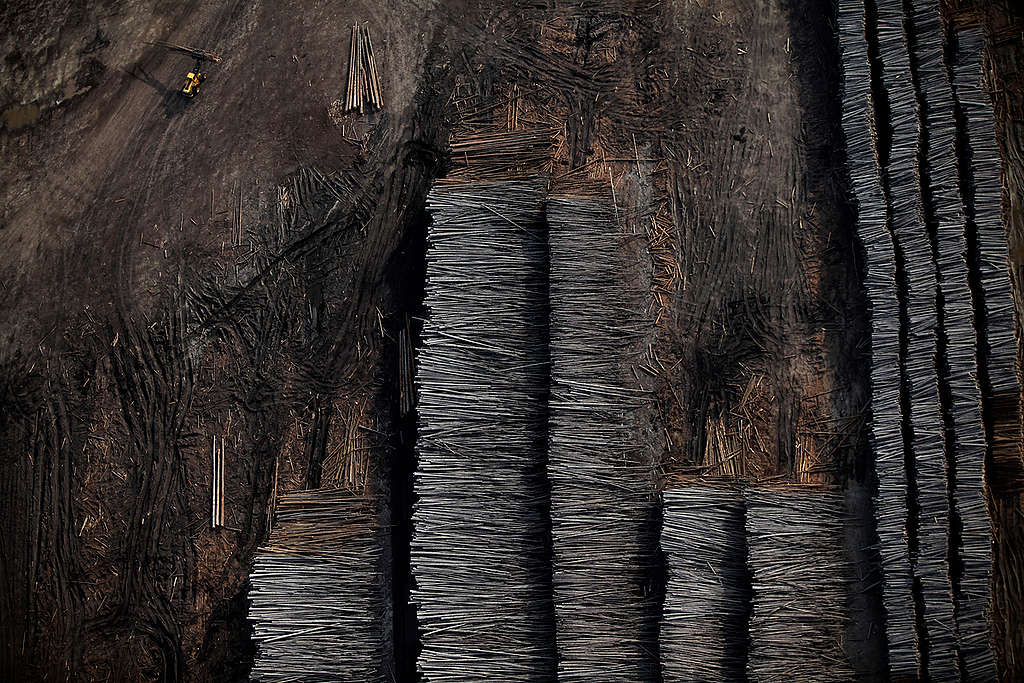
Finding 2: Logging natural forests makes climate change worse – no matter how trees are used
The research points out that clearcut logging of our natural forest ecosystems always results in a carbon debt, irrespective of the forest type or end product – energy, paper or construction materials.
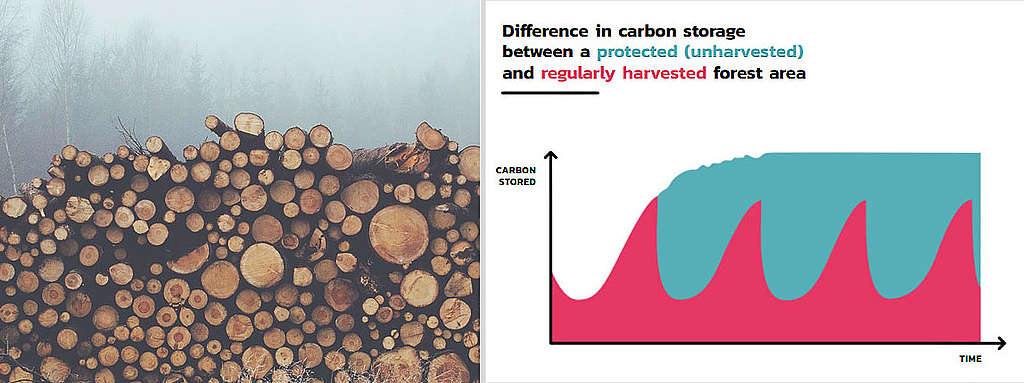
Finding 3: Burning wood to replace fossil fuels is bad for climate and wildlife
Burning wood pellets for electricity generation (biomass energy) to replace coal, oil, or natural gas, actually makes global warming worse for future generations. The carbon debt could take centuries to recover. It’s also bad news for wildlife. The research indicates that forestry leads to declines of dead wood and debris (biomass), which are critical wildlife habitats for hundreds of species – from the woodpecker to fungi.
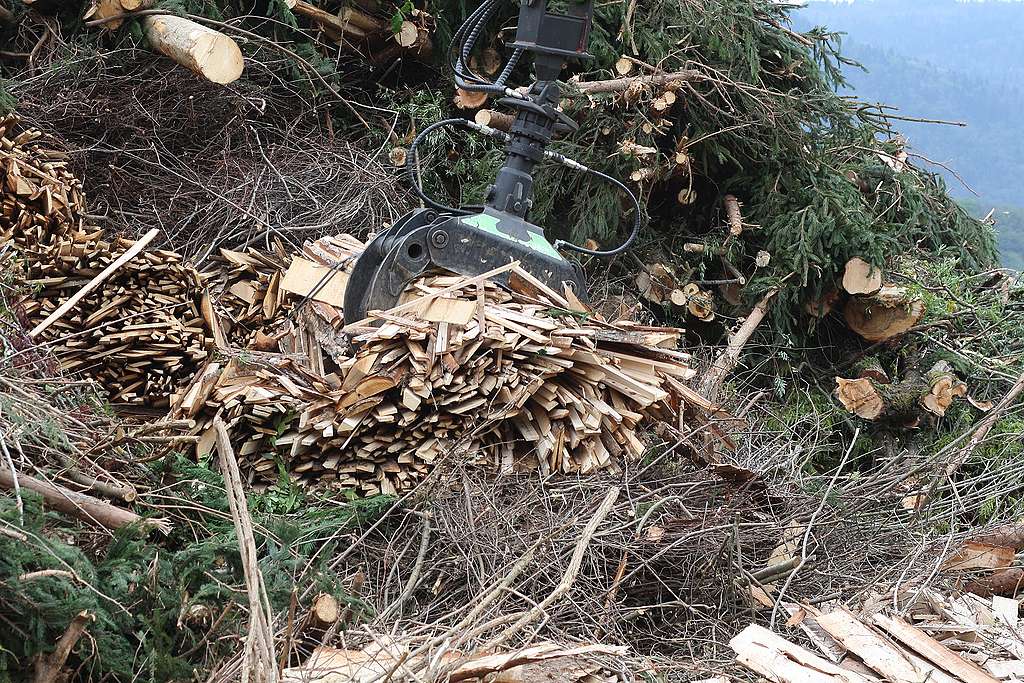
Finding 4: A forest rich in carbon is also rich in life
The study points out that a forest that contains a lot of carbon is more likely to be rich in wildlife across its landscape. This is particularly true when a forest is allowed to grow old. Here we find more variety of tree species and vegetation (especially coniferous forests), animals (caribou, wolverine, and woodpeckers), insects, fungi, and microorganisms. Protecting wildlife, just like protecting carbon rich forests, is mutually beneficial.
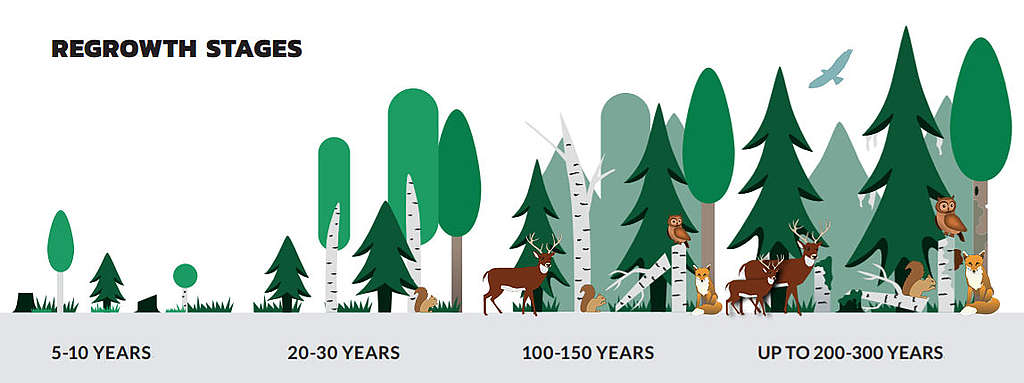
Finding 5: Protecting natural forests is the best strategy to fight climate change
Intact forests are increasingly rare across the globe, and Canada holds a good portion of what remains in our Boreal. These carbon rich forests are essential to fight climate change. The research points out that most of the ongoing loss of intact forests in Canada is due to forestry operations. Between 2000 and 2013, 60% of Canada’s intact forest loss was within areas subject to logging. The best strategy to fight climate change is to leave these forests standing. How about that!
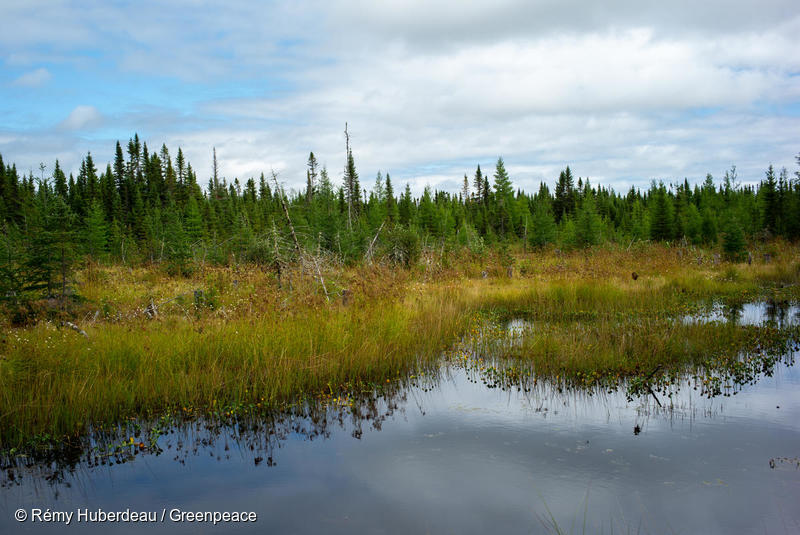
Our work at Greenpeace relies on the latest and best available science to shape our campaigns. In the case of forests, this science is telling us to slow down and let nature take care of us. Thriving natural forests are vital for our health – and survival.

Greenpeace is a people-powered, science-based, and action-oriented organization that does not take money from corporations or governments. This means we rely on individual donations from generous people like you to carry out our work.
Take action
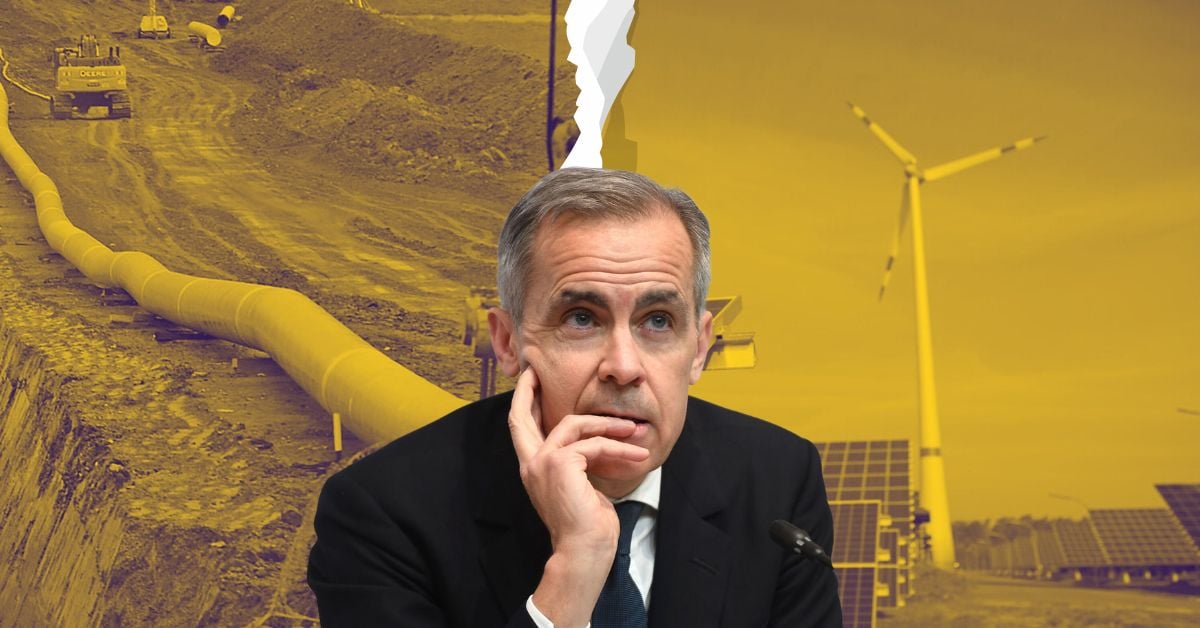

Discussion
Excellent articles. Thanks so much for your continued research and journalism in assisting the world to see the treasures we must preserve for the endurance of our planet...
Thank you for your support, Patricia!
Stop the British Columbia gov't from selling RAW LOGS to China. I have object to this with each new premier for 30 yrs. Do something if you can. Keep up the good work. Maureen McClocklin Vernon BC.
Thank you for the information and your support, Maureen! We need all the engaged citizens we can get.